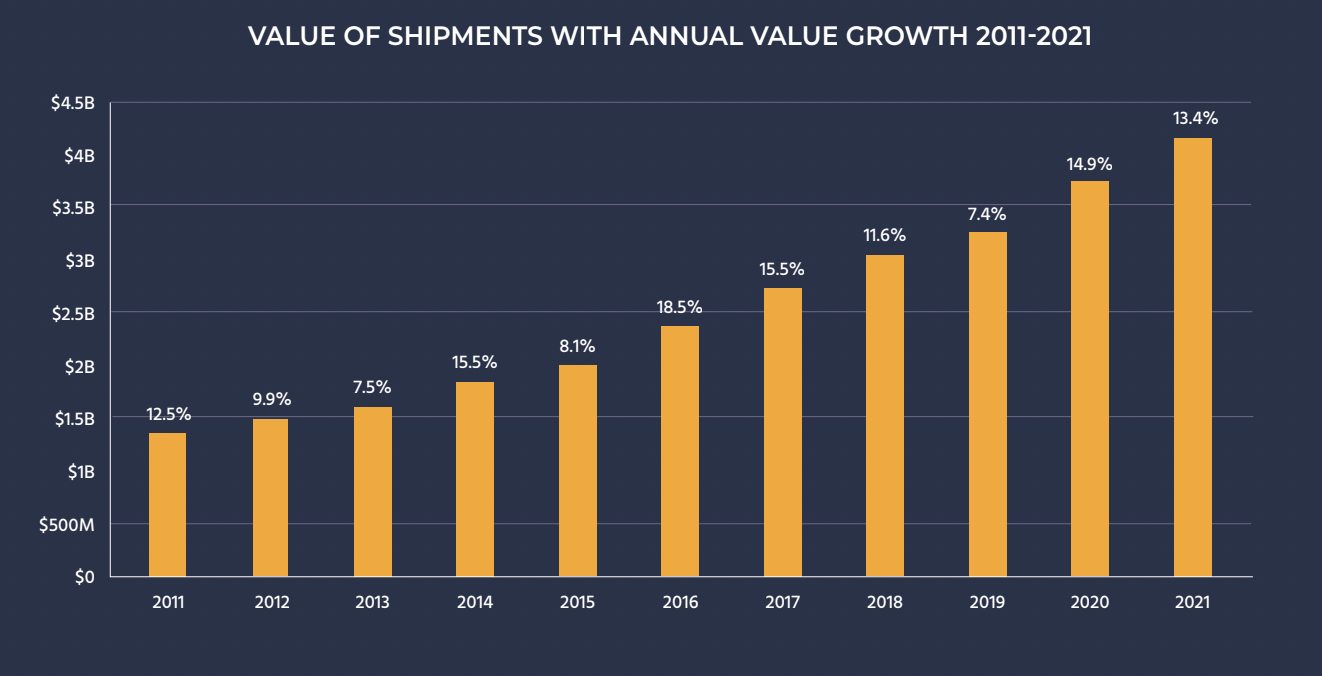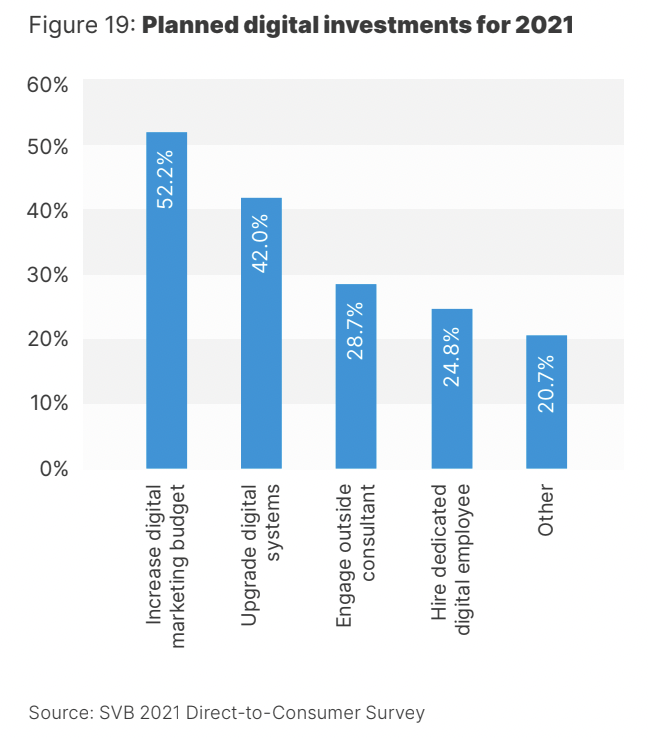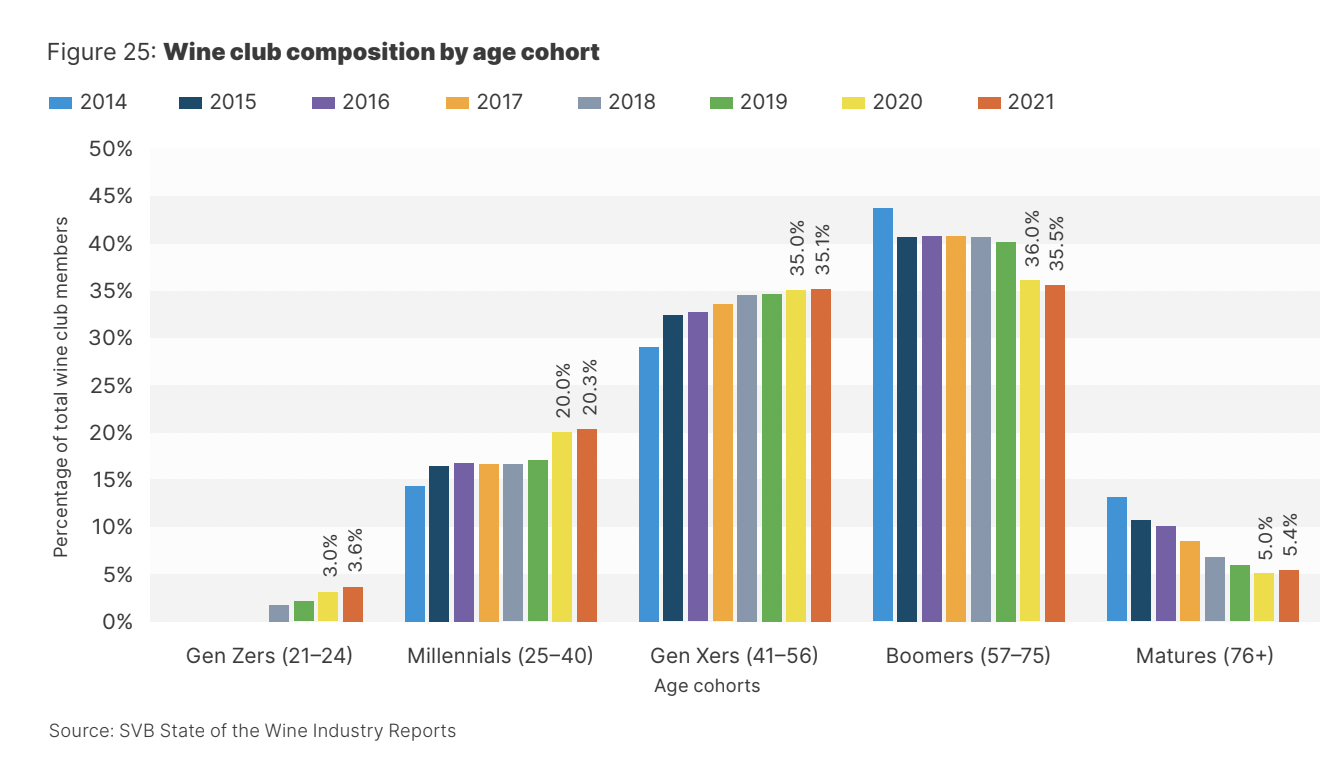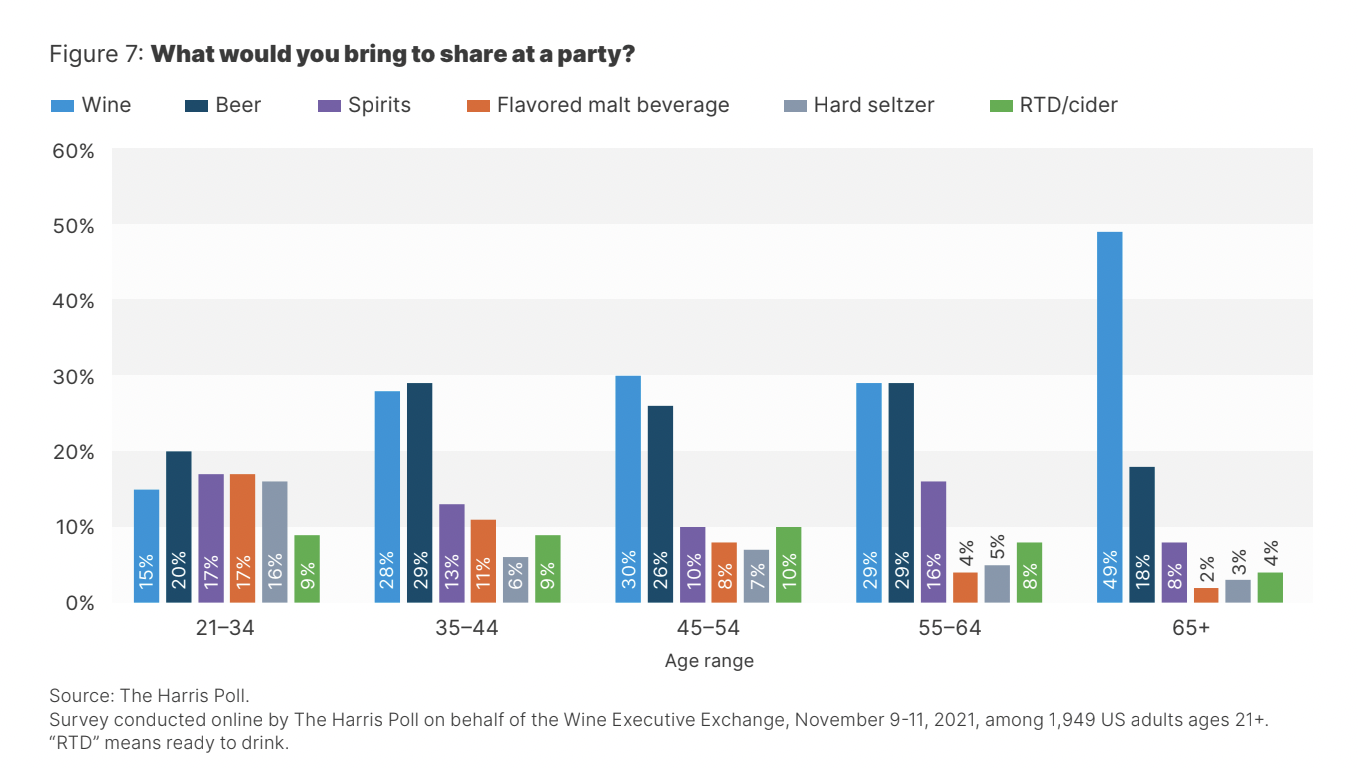Top Takeaways from 2022 US Wine Industry Reports
Last month, Sovos ShipCompliant and Silicon Valley Bank (SVB) released their much anticipated Wine Industry and DTC Shipping Reports. Each year VineSpring takes some time to digest these important documents and share our perspective as wine club and eCommerce experts. That time is now.
It goes without saying that the last few years have been a doozy. If you were to say the words “nationwide tasting room closing,” “supply chain halt,” “unbridled labor shortage,” and “rampant wildfires” all in one conversation, people would probably think you were a doomsday evangelist. But, that is our reality.
Thankfully, there are bright spots and the wine industry has performed remarkably well in many areas. “We can definitely say that 2021 was a good year for the US wine industry,” states SVB in their introduction. How can we not claim success when we saw a 13.4 percent increase in the value of the DTC shipping channel? This increase puts total wine shipments at $4.2B, the largest value of all time—by far. In addition, the Sovos DTC wine shipping report points out that much of the success the industry experienced was due to 2021 being “a year of recovery and return to normalcy”.
Sovos ShipCompliant DTC Wine Shipping Report
Below are our top takeaways from this year’s reports and advice for how to prepare your business for what 2022 has in store.
Digital Wine Sales Are Here to Stay
As we pointed out last year, the mandatory push to more virtual commerce means the wine business is poised for future success. While wineries were once miles behind other industries when it came to technology, producers of all sizes have caught up. The wine industry is better positioned than ever to tackle unexpected events, whether they be a pandemic or a prosperous season without drought and wildfires.
In 2020, when most Americans were stuck at home, total digital sales were up 31.73 percent—advancing eCommerce growth by a decade. Many thought a massive drop-off in digital sales would appear once businesses started reopening, but the opposite happened. Online retail sales in 2021 crushed 2020 sales. This indicates a massive shift in the way consumers are shopping for anything and everything online.
SBV 2022 State of the US Wine Industry Report
Wine was no exception. You might remember that we saw record wine eCommerce sales in 2020. Experts predicted that those sales would fall in 2021 as the world reopened. While we did see a small dip in online wine sales (9.8 percent of total sales in 2020 to 9.1 percent in 2021) it was much less than expected, keeping online wine sales well above pre-pandemic numbers. This indicates an even stronger shift in consumer wine buying preferences than imagined.
SBV 2022 State of the US Wine Industry Report
While we’ve been touting it for years, selling wine online and engaging customers through digital means is necessary to increase reach and retention. Wineries can no longer solely rely on their tasting room to carry their DTC sales and that message is heard loud and clear as we see increased digital investments for 2021. See figure 19 from the SBV Report.
The elevated effort to sell online will continue to have a positive impact on wine sales. Plus, many of the recent tech innovations in the wine industry are aimed at better identifying and accessing the consumer. Not only does technology open up more opportunities for wine sales, but it also appeals to a younger, digitally savvy audience—something the wine industry is lacking. That leads us to a discussion on millennials.
Time is Running Out; Wineries Must Attract Younger Generations
In case you’ve been sleeping under a rock, the wine industry is failing to attract new Millennial and Gen Z consumers. And the issue is only growing more urgent. Wine has continued to lose market share to spirits, craft beers, spiked seltzers, and ready-to-drink cocktails. More on that in a moment.
Baby boomers and Gen X are reaching (or are already in) a stage of life where they have fixed incomes and are drinking less wine. While the boomers are still a powerful group, their percentage of the population is at the point where it is experiencing a much steeper decline than younger generations. If wineries don’t expand their appeal, their market share will experience the same decline alongside the boomers.
The wine club composition graph below illustrates the power of boomers yet exposes the decline that is already happening.
SBV 2022 State of the US Wine Industry Report
To sum it up, Rob McMillan, founder of Silicon Valley Bank's Wine Division and author of the SVB report, said "The lesser interest in wine among younger consumers, coupled with the encroaching retirement and decreasing wine consumption of wine-loving baby boomers, poses a primary threat to the business."
SBV 2022 State of the US Wine Industry Report
Another graph (see right) shows the consumption rates of adult populations by age group. While the 65+ demographic still encapsulates the biggest share of wine consumers, it grows smaller each year. People ages 21 to 34 will soon take over as the biggest group.
The wine industry has continued marketing to older generations despite the warning signs, leaving Millennials and Gen Z out of the mix. These consumers have very different wants and needs. Millennials have grown up alongside the internet, have different values, and less discretionary income. They are more experimental in their tastes and preferences, are health conscious, and value transparency.
Wineries need to look to those who are doing it right, like spiked seltzers, ready-to-go cocktails, and craft beer, for clues on how to appeal to this audience. Increased digital communication and eCommerce selling are essential, but wineries need to go even further. Younger generations want to see staff diversity, environmental sustainability, and a health-conscious mindset. Campaigns that include cause-based marketing and solid brand messaging that reflect Millennial values could make a huge impact. Increasing the exposure of Millennials to wines through events and social media influencers could also make a big difference. The key takeaway is that the marketing strategy needs to change.
If wineries continue to market the way they always have and expect Millennials will turn to wine as they age, they are in for a rude awakening. On that trajectory, wine sales could drop 20 percent in volume in the next decade.
As we see premium wine take up more market share, wineries need to figure out how they can present more approachable options to this younger demographic and get them engaged and invested in the future of wine.
Spirits, Seltzers, and Craft Beer Continue to Overtake Wine’s Marketshare
The SVB Report predicted that in 2021, consumers would celebrate reopenings and make up for postponed life events like weddings and vacations. They were right, a celebration did ensue, but it did not include wine.
Wine is much more expensive per serving than spirits, craft beer, or spiked seltzers. Wine can also be intimidating with all of the regions, varietals, and vintages. It doesn’t shout “local” like craft beer or tout health benefits like seltzers. And, unlike spirits, wine doesn’t have a very long shelf life once opened.
SBV 2022 State of the US Wine Industry Report
The survey results (see left) left paint a shocking picture. The survey asks respondents what beverage they would bring to share at a party. The decline of wine as the beverage of choice from age 65+ (49 percent) to people under 35 (15 percent) is astounding. It’s also apparent that the younger the consumer, the more likely they are to drink consistently across categories.
The entry point for wine consumers has traditionally been the lower-priced and higher-volume wines. Now, these wines are declining in popularity and no longer connect with younger generations' values.
Over the last four years beer and spirit producers have invested more than three times as muchas winemakers in annual media spending. While many wineries are operating in a manner that would attract younger generations (sustainable practices, local ingredients) they aren’t getting the message out. To prevent spirits and craft beer from overtaking wine, wineries need to figure out how to introduce approachable wine that aligns with consumer preferences and is marketed to the channels where those consumers spend their time.
It All Ties Together
Wineries that are investing in digital channels are on their way to securing a more sustainable future. While younger generations may lead the charge when it comes to online consumption, people at every age have warmed to the convenience of online shopping and wine delivery. Now is the time to continue to invest in digital channels to keep the industry competitive and moving forward.
To connect with new, younger customers, wineries need to adapt their marketing stories to appeal to different values, wants, and needs. Producers need to step away from pushing the lifestyles of the rich and famous and move towards telling their sustainability story, supporting a diverse culture, and living a healthy and holistic life… that is enhanced by wine, of course.
Spirits, seltzers, craft beer, and ready-to-drink cocktails are here to stay and the wine industry can learn a lot from them. Wine truly has an amazing story to tell and done right with the proper investment, the wine industry can win back some market share.
If you’d like to learn more about how VineSpring can help your business leverage technology to attract a wider audience and scale, feel free to reach out. We’d be happy to show you how we can work for your unique business.
















